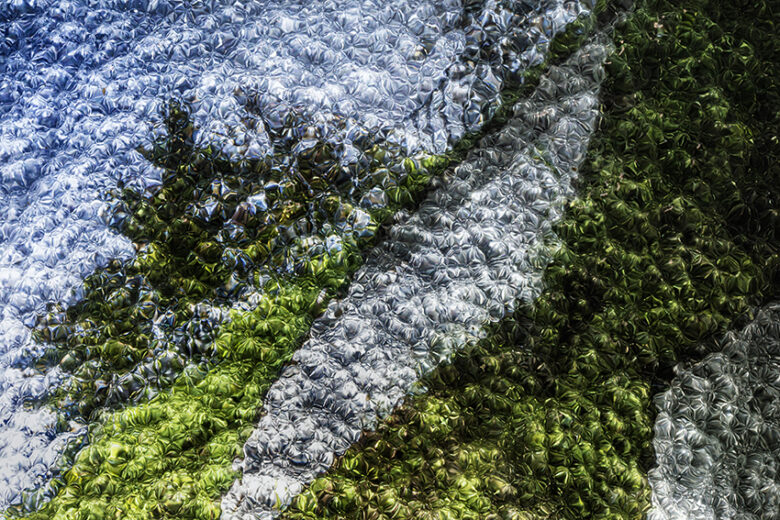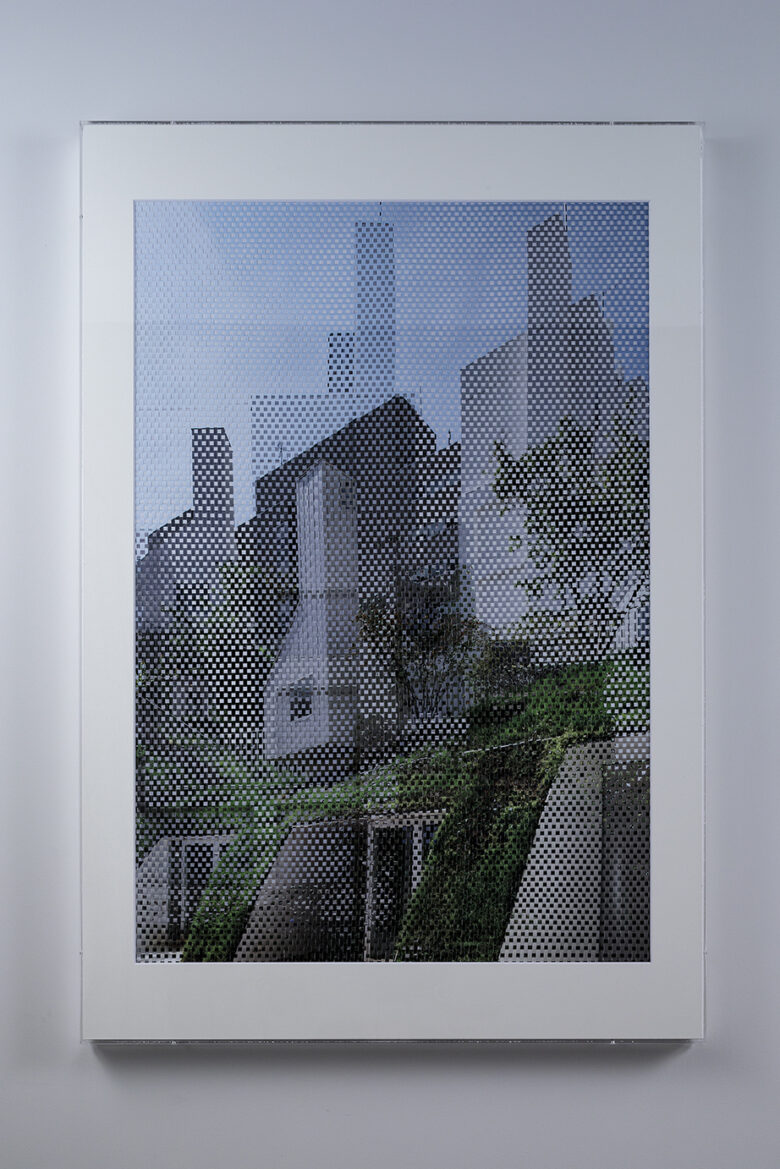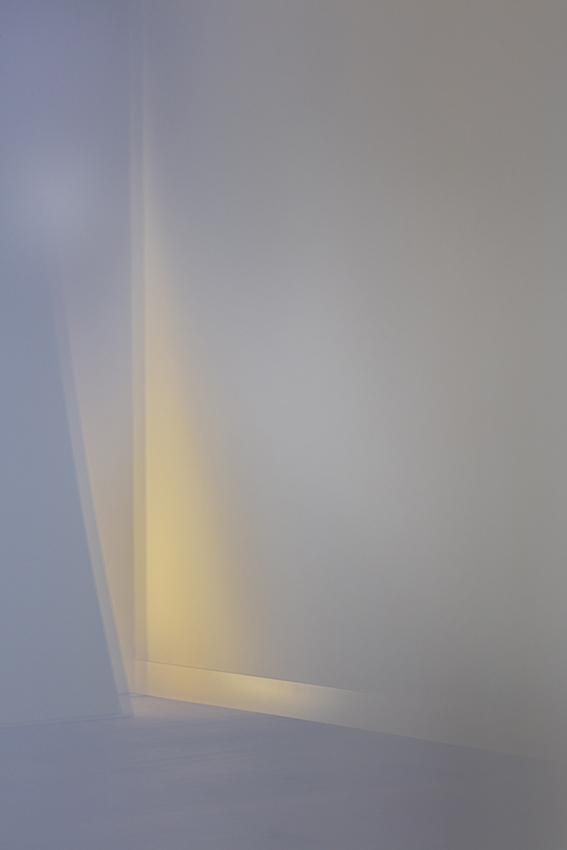ROOM 07 木暮 伸也 / SHINYA KIGURE


shiroiya_200509_gt_001《欠片を見つめる》/ shiroiya_200509_gt_001《Staring at the fragrments》

shiroiya_portrait_001

景織_shiroiya_01 / KESHIKI, woven scenery_shiroiya_01

parallax_shiroiya_200808_002

parallax_shiroiya_200808_001
1970年、群馬県前橋市生まれ。1993年、「場所・群馬」参加を機に、地域や日常の風景から着想を得て制作。1997年に群馬県芸術文化振興基金によりニーム市立美術学校(フランス)にて研修。2002年、アリアンス フランセーズ バンコクアートセンターのプログラムでバンコクに滞在。主な個展に、「集積-風景」(1997年、北関東造形美術館、群馬)、「The surplus space」(2018年、ya-gins)など。主なグループ展に、「アーツ前橋開館記念展 カゼイロノハナ 未来への対話」(2013年、アーツ前橋、群馬)、「ここに棲む-地域社会へのまなざし」(2015年、アーツ前橋)、「群馬の美術2017―地域社会における現代美術の居場所」(2017年、群馬県立近代美術館、群馬)、「ソウウレシ」(2019年、旧本間酒造、群馬)など。2016年上毛芸術文化賞受賞。前橋中心市街地の中央通りに位置するアーティストや建築家などで構成・運営される「Maebashi Works」を2013年に立ち上げ、現在まで運営に携わる。展覧会やトークイベント、滞在制作なども行うオルタナティブな活動は、地域の芸術活動をけん引し、地域住民とアーティスト重要な交流の拠点となっている。
木暮は、実に多様な手法を用いて、写真の可能性を追求する。2枚の写真が縦糸と横糸のように織り込まれた『景織』は、リノベーションの前後、つまり過去と現在の白井屋ホテルの外観が織り込まれ、多重露光のように視覚効果を生み出し、建物と土地の持つ時間と歴史を想起させる。『parallax』は、ファインダー視野と実際に撮影される画面にズレが生じる現象を指し、建築の一部であるガラスなどの反射を用いて映し出された風景は、内部と外部、虚像と実像、色彩と光の境界を曖昧にする。『欠片を見つめる』の幾何学模様のように見える形状は、肉眼ではほぼ見えないようなガラスの凹凸であり、かつてここで使用されていた、ガラスの破片をカメラのピントグラスに嵌め込み、現在の白井屋ホテルを写し撮っている。写真とは本来、一瞬の出来事を写し取り、記録することに長けたメディアである。しかし木暮は、この場所が持つ蓄積された時間に目を向ける。場所の歴史と記憶を積み重ね、複数の視点の交点を生み出すことで、いまここにある時間を可視化させようとする試みである。
Shinya Kigure was born in Maebashi, Gunma Prefecture, in 1970.In 1993, Kigure’s participation in PLACE/GUNMA sparked his interest in work inspired by everyday local scenery. In 1997, he participated in a training course at the Nimes School of Fine Arts in France with the support of the Gunma Prefecture Arts and Culture Promotion Fund. In 2002, he spent time in Bangkok participating in a program run by the Alliance Française Bangkok Art Centre. His major solo exhibitions include Accumulation: Landscape (North Kanto Art Museum, Gunma, 1997) and The surplus space (ya-gins, 2018). His major group exhibitions include The Flower with the Color of Wind: Dialogues for the Future (Arts Maebashi, Gunma, 2013), Living Locally: Reconsidering Critical Regionalism (Arts Maebashi, 2015), Art of Gunma 2017: Place for Modern Art in Local Society” (Museum of Modern Art Gunma, 2017), and Soureshi (Former Honma Sake Brewery, Gunma, 2019). In 2016, Kigure received the Jomo Arts and Culture Award. In 2013, he founded Maebashi Works, a space in central Maebashi’s main street run by and for artists and architects, and he remains involved in its operation today. Maebashi Works has come to function as an important hub of interaction for local residents and artists, holding alternative activities like exhibitions, talk events, and residence programs that lead artistic activity in the region.
Kigure pursues the possibilities of photography through a variety of methods. In KESHIKI (woven scenery), two photographs are woven together like warp and weft. The photographs show the facade of Shiroiya Hotel before and after its renovation, respectively, so that the work as a whole weaves together past and present. This creates a visual effect like multiple exposure, reminding the viewer of the time and history inherent in architecture and land. The word parallax originally referred to the images caused by differences between the visual field as seen through a camera viewfinder and the actual picture taken. Kigure’s Parallax uses reflections from glass, which is part of the building’s architecture, to show the scenery outside, ambiguating the boundaries between inside and outside, virtual and real, colour and light. Staring at the fragments contains geometrical figures that are actually bumps and scratches on glass, virtually undetectable to the naked eye. Debris from glass once used in this building was fitted to the focal glass of a camera that was then used to shoot the current Shiroiya Hotel. By nature, photography as a medium is best suited to capturing and recording momentary events. Kigure, however, turns the viwer’s gaze to the accumulation of time unique to this place. This is an approach visualising the here and now by creating an intersection between multiple perspectives and overlaying this place’s history and memory.

